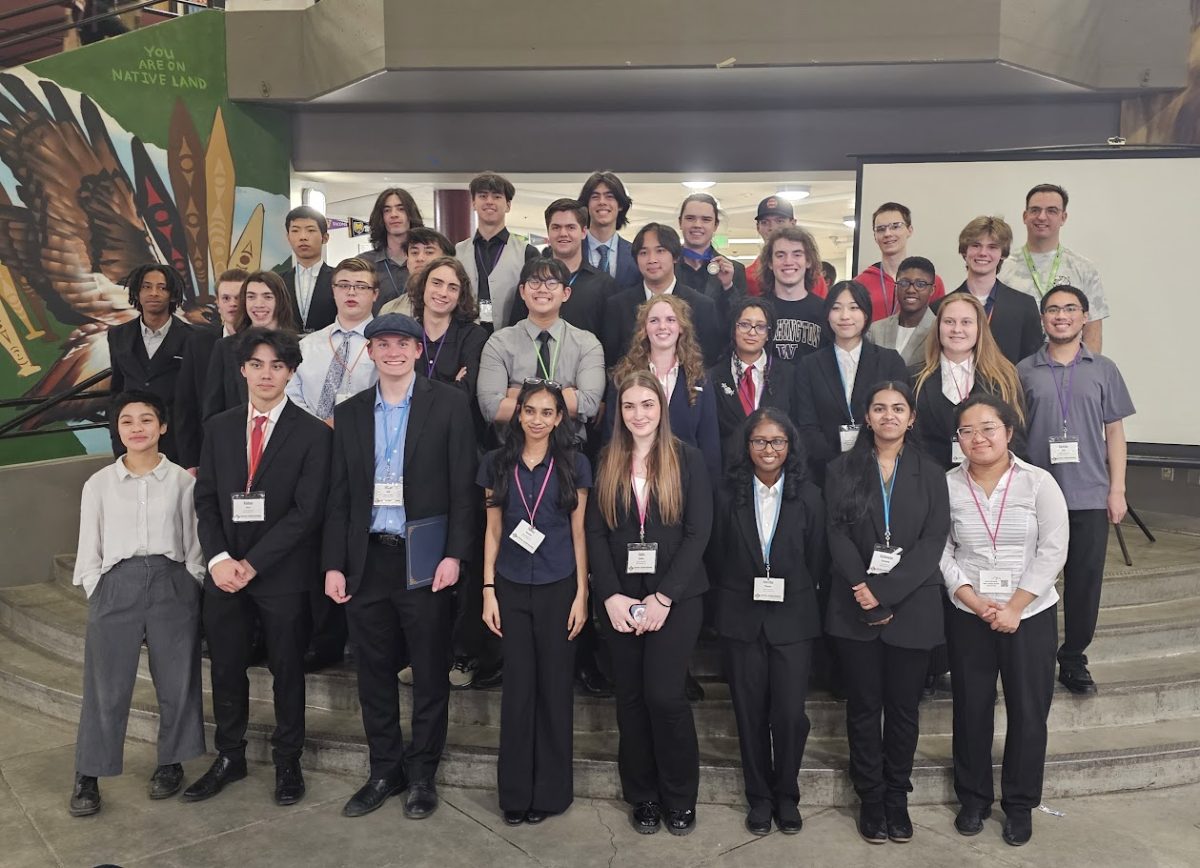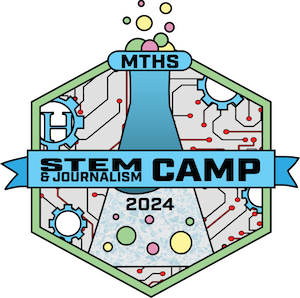Textbooks are an inescapable part of modern American public education. The vast majority of schools, from the elementary to college level, use textbooks in a variety of courses that cover all subject areas, from the humanities to the sciences. But these physical textbooks now face much controversy as online textbook resources become available, which often contain more updated information for a lesser long-term cost.
Teachers mainly use textbooks as a tool for students to gain supplementary information regarding topics discussed in class. Textbooks can help students gain information for in-class projects and can also be used to assign homework to students; they have evolved into a valuable resource for teachers to help teach students necessary information, especially in Advanced Placement and honors classes, where textbooks generally experience heavier use.
Science teacher Adam Welman teaches multiple biology classes at Terrace. He has students use their biology textbooks to provide support to the material taught during class. However, he does not have a consistent textbook use in his classes.
“I use the biology textbook in my class all year, though the frequency varies week-to-week,” Welman said. “Most of my textbook use is related to homework— for example, I might assign a reading and Cornell notes assignment once or twice in one week, and then not at all the following week. I sometimes assign questions from the textbook as homework, though not very often.”
Textbooks offer more detail than teachers can teach in classes, and enable students to review the subjects taught in class outside of school. However, many students find learning from textbooks less engaging and believe they do not retain as much information when learning a topic from a textbook compared to learning that same topic in class.
Heavy textbooks have also been linked to chronic back pain in students according to numerous studies, including those published in the Archives of Disease in Childhood from the United Kingdom.
Physical textbooks continue to be widely utilized in high schools across America, including MTHS. Some classes, such as many of the mathematics courses at Terrace, offer the use of online textbooks in addition to physical textbooks. But these online textbooks are essentially digital copies of the physical textbooks, and contain little new information.
Physical textbooks and the online textbooks which directly correspond to them are rarely updated by school districts due to the great cost of purchasing enough textbooks for all schools in the district. Costs get up to thousands of dollars for each course in which the textbooks are being updated.
Ideally, textbooks would be updated yearly to be consistent with the latest information in their respective fields, but that would be far too expensive, and high school level textbooks rarely, if ever, receive yearly updates. Many teachers support updates about every five years, but that would also present serious cost problems to the school districts which have to pay for them.
The average textbook in an American public high school is used for between 7 to 10 years. However, this period of textbook use without update can continue for a much longer period of time, as is the case for the textbooks in Welman’s biology classes, which are about 14 years old.
“[The biology textbooks] should have been updated many years ago,” Welman said. “Biology content is constantly being updated as a science, so our district should obtain newer bio textbooks at least every five years or so, though that’s very expensive.”
Many textbooks, especially in the scientific fields, become outdated almost as soon as they are published due to the rapidly expanding knowledge in those fields. An example of this is in biology, where information in the textbooks concerning topics such as genetics and genetic engineering are vastly outdated due to how much knowledge about those topics has increased throughout the past 14 years. Biology, along with other fields, are experiencing constant advancement.
Many of the textbooks used by the Edmonds School District (ESD) have passed the typical usage period of 7 to 10 years, meaning that these textbooks are generally more outdated than the textbooks used in other American public school districts.
While this is not generally a problem in areas such as mathematics, where the information taught to students has remained almost the same for as long as these courses have existed, a serious problem is posed to fields with knowledge that is constantly advancing, such as the sciences and humanities.
History teacher Michole Mattix teaches with 10 year old textbooks originally published in 2007, which she does not feel are necessarily outdated.
“I really don’t see these textbooks as ‘outdated,’ I would just like some more technological support and supplemental material from the publisher,” Mattix said.
As many educational resources continue to move online, the opportunity for more regularly updated supplemental materials for textbooks becomes more readily available. However, the costs of moving educational materials online concern many school districts.
The average cost of an individual physical high school textbook is $70. Since the school district must purchase enough textbooks for all students in all of the classes in the subject area the textbooks are being replaced for, the costs of replacing physical textbooks quickly add up. This cost has increased greatly in the past decade, as the cost of textbooks has risen 82 percent in the last decade.
The cost of adopting separate online textbooks in a school district is much higher at first. Devices required to view the textbooks, such as personal student laptops or tablets, cost upwards of $200 a student, combined with the cost of purchasing the access to the online textbook itself. For initial adoption of online textbooks, the cost per student can total up to as much as over $300.
However, even those school districts which have already invested in personal devices for students, such as the ESD, are reluctant to give up physical textbooks in favor of their online counterparts.
Online textbooks offer the benefit of containing information which can be updated as the knowledge in a particular subject increases. They also do not have to be carried around like physical textbooks, reducing the negative health effects of carrying heavy textbooks from class to class. A student can take all of their textbooks with them by simply carrying their electronic device issued to them by the school district.
Many, however, question the effectiveness of learning from online textbooks as compared to physical textbooks. Statistics show that countries with high physical textbook usage rank better in terms of education in scientific subjects.
In Taiwan, 92 percent of students are issued textbooks in science classes; the country ranks fourth in global scientific education. In the United States, 63 percent of high schoolers are issued textbooks in their science classes, and the country ranks 25th in global scientific education.
Advocates of the continued use of physical textbooks also argue physical textbooks provide students the opportunity to take written notes, which they claim better help students retain information than typed notes. They also make the case that learning from physical textbooks and taking written notes from them will better prepare students for university, where they will most likely be required to take written notes at some point. Also, textbooks are in many cases easier to issue to students and easier to reference back to when reviewing information.
Though the rapid developments in technology and the subjects which textbooks cover produces many problems for present and future textbook use, the goals of textbook use remain about the same as they always have been.
Mattix believes that, ultimately, textbooks should help students learn “how to read more effectively, efficiently and critically.”










